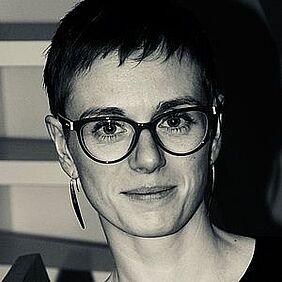Eléonore Roussel, winner of the 2022 CNRS bronze medal
DYSCO Vie du labo
The “accelerator physics” group of PhLAM is interested in the dynamics of relativistic electron bunches in synchrotron radiation centers. These accelerator-based radiation centers are essential today in the production of radiation in extreme wavelengths such as THz or extreme ultraviolet (EUV) and X-rays. The characteristics of the radiation emitted are strongly linked to the properties bunches of relativistic electrons. But under the effect of complex interactions, these packages can develop spatio-temporal instabilities leading to the formation of microstructures inside the package.
The challenge then consists in controlling or exploiting the rich and complex dynamics of these bunches of relativistic electrons at the origin of the emission of this intense synchrotron radiation. The PhLAM team in which Eléonore works has made it her specialty and is recognized worldwide in this field.
To better understand the mechanisms at work, the PhLAM team has also specialized in the development of ultra-fast optical measurement methods which make it possible to observe the deformation of electron packets at extremely short time scales. (on the scale of a hundred femtoseconds).
Eléonore is also interested in the generation of coherent radiation in very short wavelengths through the interaction between relativistic electron bunches and conventional lasers. These free-electron lasers use bunches of relativistic electrons oscillating in a periodic magnetic field to amplify light.
All of this work accompanies the emergence of a new generation of light sources based on new compact relativistic electron accelerators, such as acceleration by plasma waves created by a laser.
Finally, these activities have been made possible thanks to close collaboration with numerous synchrotron radiation centres, at national, European and international level.
> The CNRS article here

